Dalmatian toadflax identification and control
Information about the noxious weed, Dalmatian toadflax. Dalmatian toadflax is also known by its Latin name, Linaria dalmatica spp. dalmatica.
About this weed
Dalmatian toadflax is a regulated Class B noxious weed in King County. This means control is required on all properties and rights-of-way in King County. Dalmatian toadflax is also on the Washington quarantine list, meaning it is illegal to buy, sell or offer it for sale in the state.
Dalmatian toadflax is known as Linaria dalmatica spp. dalmatica and is in the figwort family. Other common names are broad-leaved toadflax or wild snapdragon.
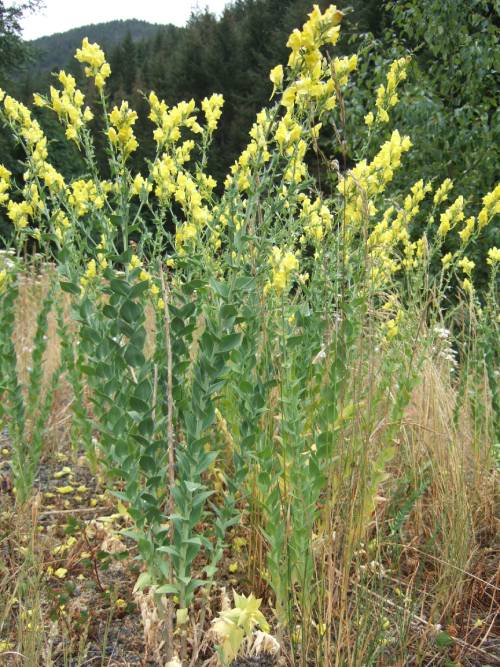
Why it’s a problem
Dalmatian toadflax displaces native and beneficial plants, has no value as a forage plant, and is poisonous to cattle if consumed in large quantities. It is a highly aggressive and can genetically adapt to many environmental conditions. It is very difficult to control once established. Its root system is perennial and spreading, with individual plants living an average of 3 to 5 years. The roots can extend 4 to 10 feet deep and up to 10 feet from the parent plant. A single plant produces up to 500,000 seeds. Seeds can remain viable for at least 10 years and are very small and easily spread.
Dalmatian toadflax takes over disturbed areas including roadsides, rangeland, forest clearings and industrial areas. It often displaces native and desirable species. Infestations can begin in small, disturbed sites, and then spread to surrounding habitats that are in excellent condition. Dalmatian toadflax can form a monoculture that severely reduces forage, productivity, biodiversity, wildlife habitat, and livestock production.
Plant description
Dalmatian toadflax is native to the Mediterranean. It was brought to the United States in the late 1800s as an ornamental plant, for use in dye or as a medicinal. It is a perennial with extensive roots that grow up to 3 feet tall and spreads by seed and lateral (sideways) roots. The plant's overall form is generally narrow and upright, with multiple stems growing from a single woody base.
Leaves are pale green, waxy-rubbery, dense, and heart-shaped. They are arranged alternately along the stem (or they do not grow directly across from each other, but instead alternate down the stem). The upper leaves clasp the stem.
Most upright growth dies back in the fall, leaving shorter stems laying on the ground that persist through the winter.
Snapdragon-type flowers are bright yellow, sometimes tinged with orange, and are 1 to 1.5 inches long.
Seed pods, flowers and flower buds are often present at the same time. Plants have a long flowering period, generally May through September. Mature plants can produce up to 500,000 seeds and seeds remain viable in the soil for over 10 years.
The vertical roots are large, rough, somewhat branching, and may extend down 6 feet or more. Long slender lateral roots branch from the vertical roots and may extend 10 feet or more, remaining close to the soil surface. Buds that develop on the lateral roots produce new shoots. Upper stems mostly die back each winter and new stems emerge from short lying down stems and root crowns.
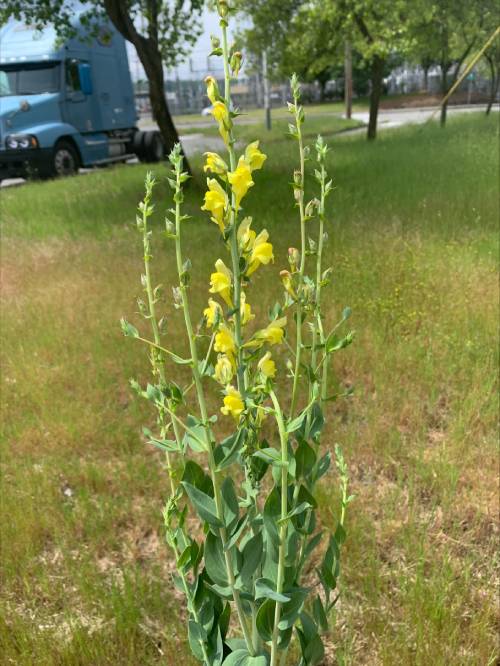

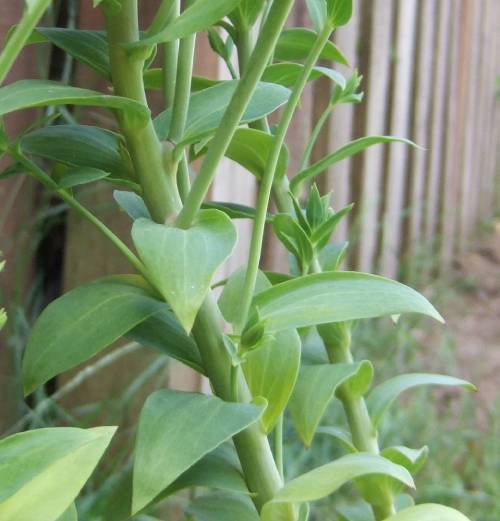
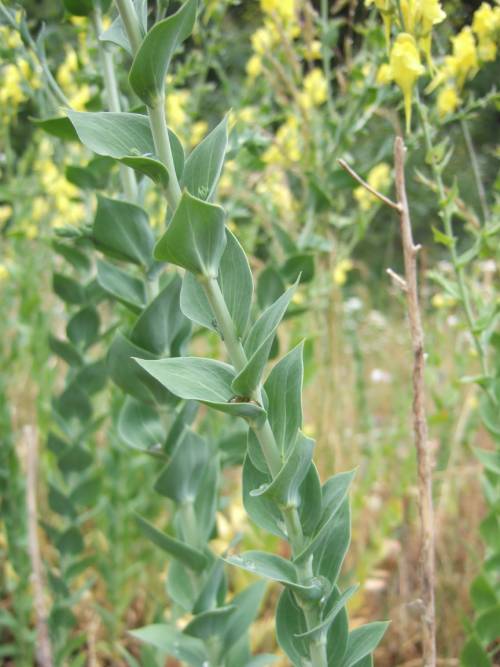
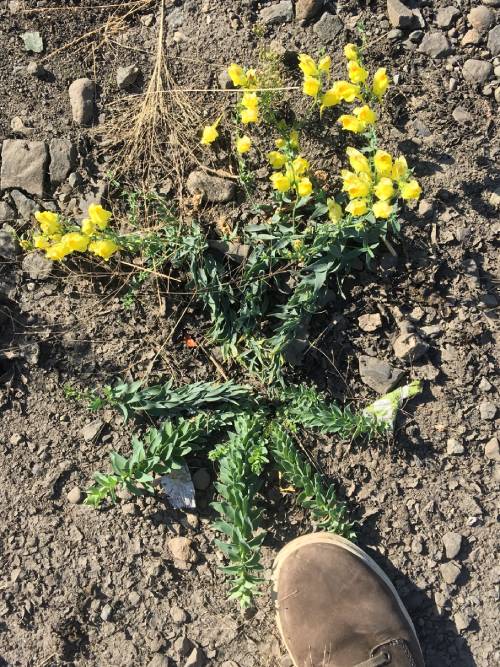
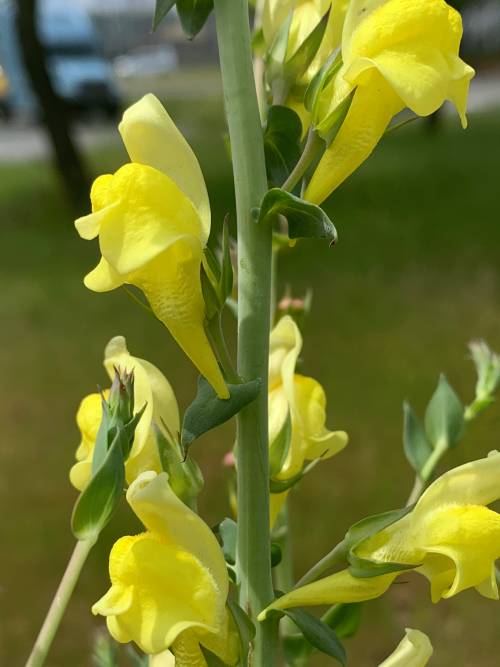
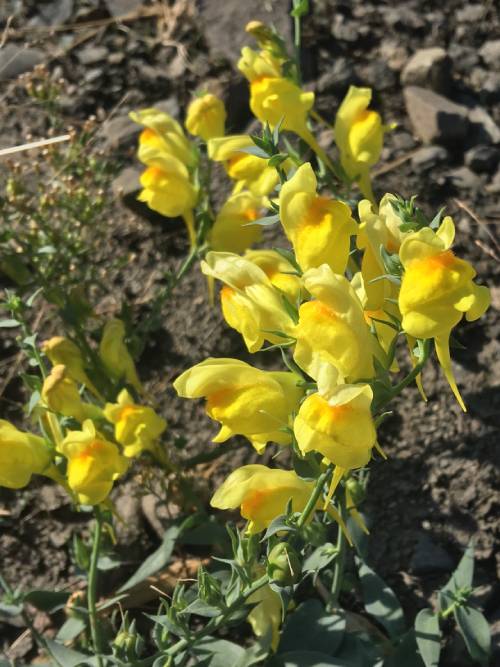
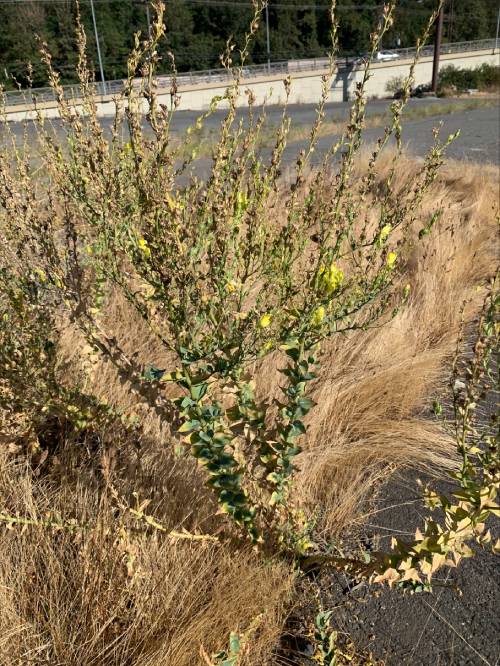
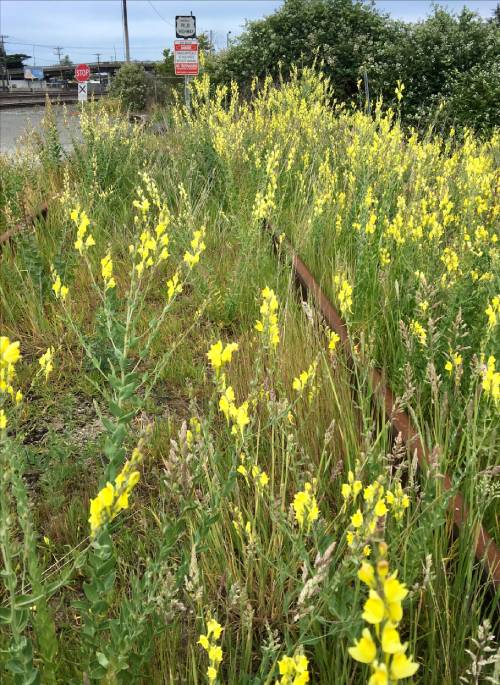

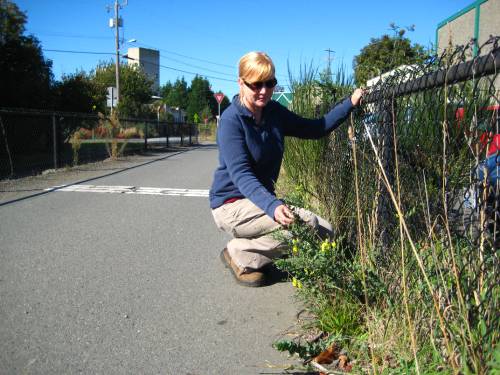
Be aware of look-alike plants
The common garden plant snapdragon, genus Antirrhinum, can easily be mistaken for toadflaxes. The yellow flowers of snapdragon look similar to those of Dalmatian toadflax. The key is to look at the leaves, which on snapdragons are much thinner than waxy toadflax leaves.
Dalmatian toadflax, called both Linaria dalmatica and Linaria genistifolia in literature, is a close cousin of another European import named yellow toadflax or butter and eggs (Linaria vulgaris), that is widespread throughout North America. Yellow toadflax is smaller and has narrow, linear leaves instead of the wide, clasping, heart-shaped leaves of Dalmatian toadflax. Although both toadflaxes are noxious weeds in Washington, yellow toadflax is so widespread in King County that there is no requirement to control it.
When in doubt, take photos and share them with us or report them on iNaturalist.
What to do if you find it
Please notify us if you see Dalmatian toadflax growing in King County. Our program staff can provide you with site-specific advice on how best to remove it. We map all known locations of regulated noxious weeds in order to help locate new infestations in time to control them.
Control methods
We recommend using a combination of methods to control noxious weeds. In areas with few weeds, it is important to act quickly before they become harder to control. Make a long-term plan as it often takes several years to get rid of most weeds. Start in the least infested areas first and then move into more heavily infested areas.
For more in-depth control information, read Best Management Practices (BMP) for Dalmatian toadflax
Manual control
Isolated plants can be dug up fairly effectively if the soil is not too hard or rocky. However, roots tend to break off and new shoots will re-sprout from any remaining lateral roots. Make sure to follow up at the site for at least a few years to watch for re-growth from the roots and emerging seedlings.
Mechanical control
Mowing is not an effective control method for toadflax since it spreads by lateral roots as well as seeds. Seeds and root fragments are easily moved to other sites on mowers and other equipment so make sure to clean equipment before moving to a new location.
Cultural control
Maintaining a healthy stand of grasses and other species will help prevent the spread of toadflax since it is most competitive in sparsely vegetated areas. Toadflax is not generally a problem in cultivated areas as regular tillage will control it.
Chemical control
Stay safe when using herbicide:
- Always read the label before use.
- Wear a long-sleeved shirt, long pants, shoes, and eye protection.
- Follow state and local regulations.
Chemical control of toadflax can be difficult. The waxy leaves make it necessary to add and oil-based or silicon surfactant to the herbicide mix. Spraying should be done in late spring when plants begin to flower or in the fall before the plants die back. Wet all foliage thoroughly but not to the point of running off the plants.
Specific herbicide rates and products can be found in the Pacific Northwest Weed Management Handbook.
Biological control
Biocontrol agents are also available to use against this toadflax. These agents are not compatible with all land management practices and will not completely eliminate infestations, but in the long term these insects can help reduce the invasiveness of toadflax.
For more information about these biocontrol agents, please visit Biocontrol Factsheets - NAISMA.
Disposal instructions
Dalmatian toadflax spreads both by seed and spreading creeping horizontal roots. Seeds are very small and easily dispersed by animals, water, machinery, and mud and soil. If plants are in seed, carefully bag and cut off the stems before digging up the roots to minimize seed dispersal. Non‐flowering stems can be left on site but stems with roots should also be bagged and discarded as garbage. Do not put toadflax in yard waste bins or compost piles.
Noxious Weed Disposal - Washington State Noxious Weed Control Board
Learn more about Dalmatian toadflax
Read Dalmatian toadflax fact sheet
This fact sheet is also available in these languages:

 Translate
Translate